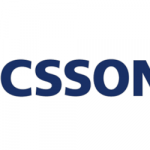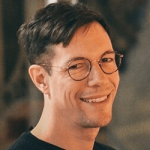Quantum News Briefs April 27: Smartphones could become portable quantum sensors one day; Physicists fully entangle two quantum digits; QuProtect wins next-gen quantum computing Global InfoSec award + MORE

Quantum News Briefs April 27: Smartphones could become portable quantum sensors one day; Physicists fully entangle two quantum digits; QuProtect wins next-gen quantum computing Global InfoSec award + MORE.
Smartphones could become portable quantum sensors one day
 Smartphones could one day become portable quantum sensors thanks to a new chip-scale approach that uses organic light-emitting diodes (OLEDs) to image magnetic fields. Quantum News Briefs summarizes an April 26 Nanowerk article.
Smartphones could one day become portable quantum sensors thanks to a new chip-scale approach that uses organic light-emitting diodes (OLEDs) to image magnetic fields. Quantum News Briefs summarizes an April 26 Nanowerk article.
Researchers from the ARC Centre of Excellence in Exciton Science at UNSW Sydney have demonstrated that OLEDs, a type of semiconductor material commonly found in flat-screen televisions, smartphone screens and other digital displays, can be used to map magnetic fields using magnetic resonance.
Sensing of magnetic fields has important applications in scientific research, industry and medicine.
Published in the journal Nature Communications (“Sub-micron spin-based magnetic field imaging with an organic light emitting diode”), this technique is able to function at microchip scale and – unlike other common approaches – does not require input from a laser.
The majority of existing quantum sensing and magnetic field imaging equipment is relatively large and expensive, requiring either optical pumping (from a high-powered laser) or very low cryogenic temperatures. This limits the device integration potential and commercial scalability of such approaches.
By contrast, the OLED sensing device prototyped in this work would ultimately be small, flexible and mass-producible. Professor Dane McCamey of UNSW, who is also an Exciton Science Chief Investigator, said: “Our device is designed to be compatible with commercially available OLED technologies, providing the unique ability to map magnetic field over a large area or even a curved surface.You could imagine using this technology being added to smartphones to help with remote medical diagnostics, or identifying defects in materials.” Click here to read article in-entirety on Nanowerk.
Physicists fully entangle two quantum digits
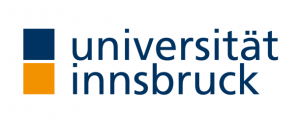 A team at the University of Innsbruck now reports In a study published on April 19, 2023, in the journal Nature Communications how two qudits can be fully entangled with each other with unprecedented performance, paving the way for more efficient and powerful quantum computers.
A team at the University of Innsbruck now reports In a study published on April 19, 2023, in the journal Nature Communications how two qudits can be fully entangled with each other with unprecedented performance, paving the way for more efficient and powerful quantum computers.
The researchers at the University of Innsbruck were able to fully entangle two qudits, each encoded in up to 5 states of individual Calcium ions. This gives both theoretical and experimental physicists a new tool to move beyond binary information processing, which could lead to faster and more robust quantum computers.
Martin Ringbauer explains: “Quantum systems have many available states waiting to be used for quantum computing, rather than limiting them to work with qubits.” Many of today’s most challenging problems, in fields as diverse as chemistry, physics, or optimization, can benefit from this more natural language of quantum computing.
The study was funded by the Austrian Science Fund FWF, the Austrian Research Promotion Agency FFG, the European Research Council ERC, the European Union and the Federation of Austrian Industries Tyrol, among others.
QuProtect wins next-gen quantum computing Global InfoSec award
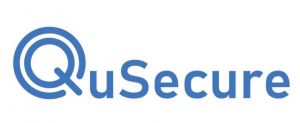 QuSecure, Inc. announced on April 25 that its industry-leading PQC solution QuProtect has won the coveted Global InfoSec Award from Cyber Defense Magazine (CDM), the industry’s leading electronic information security magazine. QuProtect was named the best solution in the Next-Gen Quantum Computing awards category during the RSA Conference. Quantum News Briefs summarizes.
QuSecure, Inc. announced on April 25 that its industry-leading PQC solution QuProtect has won the coveted Global InfoSec Award from Cyber Defense Magazine (CDM), the industry’s leading electronic information security magazine. QuProtect was named the best solution in the Next-Gen Quantum Computing awards category during the RSA Conference. Quantum News Briefs summarizes.
This is Cyber Defense Magazine’s tenth year of honoring InfoSec innovators from around the Globe. The judges were CISSP, FMDHS, and CEH certified security professionals who voted based on their independent review of the company submission and materials on the website. CDM has a flexible philosophy to find more innovative players with new and unique technologies, vs. only larger enterprises.
“It is extremely rewarding to be recognized at the RSA Conference by this esteemed panel of security judges as the leading solution in next-generation quantum computing,” said Skip Sanzeri, QuSecure co-Founder and COO. “Our QuProtect solution enables organizations to protect their communications and secure private information as the world accelerates toward a quantum future, due to the looming threat of quantum computing’s ability to break the public key encryption we currently use. QuProtect’s post-quantum technologies are differentiated in the industry and uniquely provide secure, interoperable cybersecurity to protect networks from today’s classical threats and future quantum threats.”
QuSecure’s QuProtect software enables organizations to leverage quantum-resilient technology to prevent today’s cyberattacks, while future-proofing networks and preparing for quantum cyberthreats. It provides quantum-resilient cryptography, anytime, anywhere and on any device. QuProtect software uses an end-to-end quantum-security-as-a-service architecture that addresses the digital ecosystem’s most vulnerable aspects, uniquely combining zero-trust, next-generation post-quantum-cryptography, crypto agility, quantum-strength keys, high availability, easy deployment, and active defense into a comprehensive and interoperable cybersecurity suite. The end-to-end approach is designed to protect the entire information lifecycle as data is communicated, used and stored. Click here to read announcement in-entirety.
Europe consolidates quantum production and test
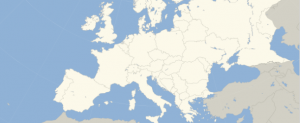
EENewsEurope’s Nick Flaherty describes two key quantum projects have started today to consolidate quantum production and test technologies to boost sustainability. Quantum News Briefs summarizes.
Two key European quantum projects have started today to consolidate quantum production and test technologies to boost sustainability.
The Qu-pilot and Qu-test projects are hosted by AMIRES to support experimental production capabilities and open testing for quantum technologies in Europe. This follows a recent move to consolidate development of neutral ion Rydberg systems: Europe consolidates its Rydberg quantum computer
The Qu-Pilot consists of 21 partners from nine different countries aiming to develop and provide access to the first, federated European fabrication capabilities for quantum technologies, building on and linking together existing infrastructures in Europe. This includes VTT in Finland, Fraunhofer in Germany and imec in Belgium as well as Infineon in Germany.
Qu-Pilot will provide services for the development of a European supply chain of quantum technologies, provide European industry, especially start-ups and SMEs, with the necessary innovation capacity, and make sure that critical IP remains within the EU. The initial service offering will be validated through use-cases with companies within the SGA. A minimum of 20 such use-cases are expected and of those 11 are already part of this Qu-Pilot.
The second project Qu-Test brings together 13 service providers for a federated network of testbeds and 11 industrial users from the European quantum community. The network brings together competences and infrastructures across Europe to offer testing and validation services.
A first goal of this cooperation is to support the creation of a trusted supply chain through the validation of quantum devices, chips, components and systems by the testbed network as an independent third party.
A second goal is to discuss and agree on unified sets of parameters to characterize quantum devices. Methodologies and procedures will be harmonized among the partners of the testbed network in a step towards establishing standards for quantum technologies.
Qu-Test is aligned along three testbeds: quantum computing, quantum communication, quantum sensing. In more detail, the Quantum Computing Testbed will measure, characterise and validate cryogenic quantum devices, cryogenic qubits such as superconducting and semiconducting qubits, photonics qubits and ion traps. Click here to read the EEUNews Europe article in-entirety.
Sandra K. Helsel, Ph.D. has been researching and reporting on frontier technologies since 1990. She has her Ph.D. from the University of Arizona.


















